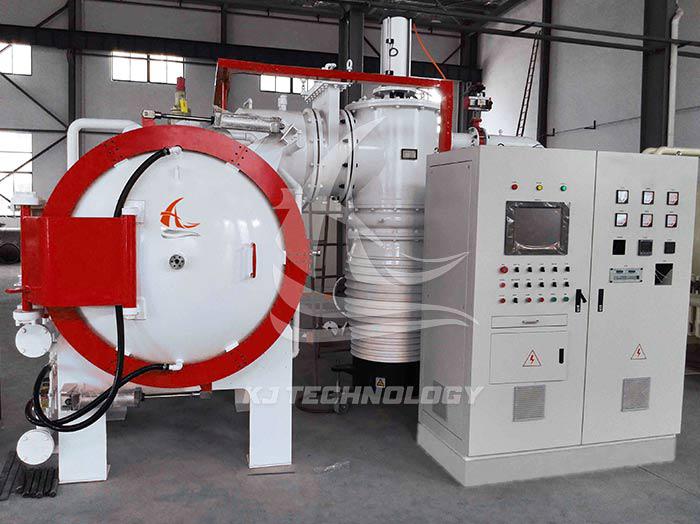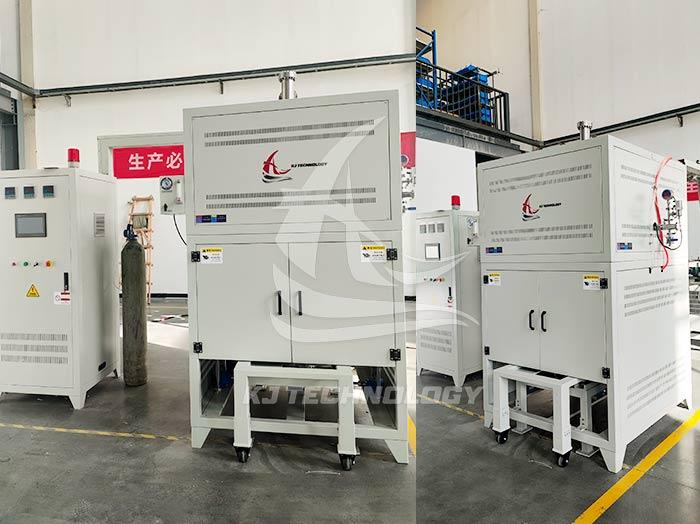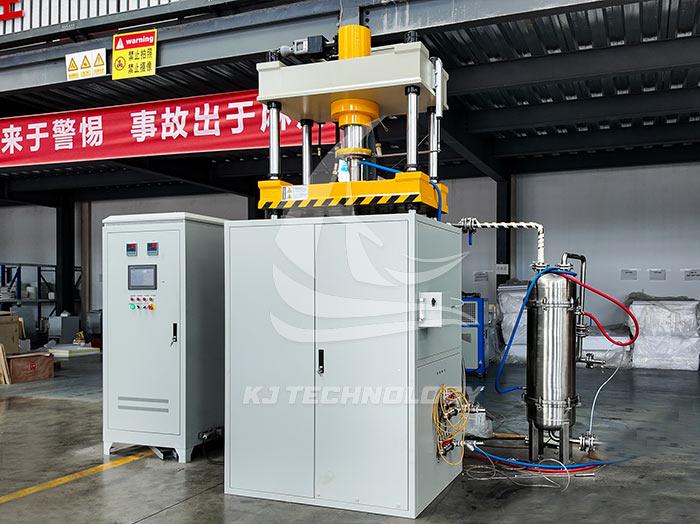Does the vacuum atmosphere heat treatment furnace support customization?
 07-14-2025 Author: KJ technology
07-14-2025 Author: KJ technology
The vacuum atmosphere heat treatment furnace supports customization, and customization services have become its core advantage in meeting diverse industrial needs. The following is an explanation from four aspects: customization requirement background, customization capability manifestation, customization process support, and customization application scenarios:
1. Customization Requirement Background: Diversified Challenges in Industrial Scenarios
Differences in material properties: Different materials (such as high-temperature alloys, titanium alloys, ceramics, semiconductors) have significant differences in requirements for heat treatment temperature, atmosphere composition, cooling rate, and other parameters. For example, aircraft engine turbine blades need to maintain temperature uniformity of ± 2 ℃ at 1000 ℃, while lithium battery cathode materials need to achieve performance oriented optimization through precise gas control.
Increased process complexity: Modern manufacturing processes such as vacuum brazing, carburizing, and deoxidation treatment require complex equipment functions. For example, the sintering of hard alloys requires simultaneous control of vacuum degree and carbon potential, while the manufacturing of semiconductor devices requires transistor annealing in a nitrogen atmosphere to reduce metal migration.
Balancing production efficiency and cost: Enterprises need to customize equipment size and automation level based on factors such as production capacity scale and site limitations. For example, small laboratories may require compact furnace bodies, while large-scale production lines require customized solutions with high production capacity and fast changeover.
2. Customization capability demonstrated: comprehensive adaptation from structure to function
Customization of core parameters
Temperature range: Supports wide temperature range customization from 200 ℃ to 1800 ℃, meeting the needs from low-temperature annealing to ultra-high temperature sintering. For example, a 1700 ℃ high-temperature furnace can process high melting point materials such as tungsten and molybdenum.
Atmosphere environment: It can integrate inert or reducing gas control systems such as nitrogen, argon, hydrogen, etc., and even achieve dynamic switching of multiple atmospheres. For example, a certain model of furnace supports switching between vacuum sintering and nitrogen quenching processes within 10 minutes.
Vacuum degree adjustment: precise control from low vacuum (10 ³ Pa) to high vacuum (10 ⁻⁴ Pa) is achieved through a combination of mechanical pumps, molecular pumps, and diffusion pumps, to meet the processing needs of different oxidation sensitive materials.
Structure and Function Expansion
Furnace size customization: Design furnace length, width, and height according to workpiece specifications, with a capacity covering 4.5L to 768L, and even support the development of irregular furnaces. For example, a certain enterprise customized a super large capacity furnace body with a length of 3m and a width of 2m for aviation components.
Heating method optimization: Provides multiple heating element options such as resistance wire, silicon carbon rod, silicon molybdenum rod, etc., and supports customized single-sided, double-sided, and five sided heating layouts to ensure temperature uniformity of ± 1 ℃.
Cooling system integration: Air cooling, water cooling, or composite cooling methods are optional, combined with programmed cooling curves to achieve flexible control from rapid quenching to step cooling.
Intelligent and automated upgrades
Customization of control system: Integrated PID intelligent temperature control instrument, LCD touch screen or upper computer software, supporting 30 segment program programming and remote monitoring. For example, a certain model of furnace is equipped with AI algorithms that can predict material deformation trends and dynamically adjust cooling rates.
Security protection enhancement: Add modules such as over temperature alarm, leakage protection, and disconnection protection according to process requirements to ensure operational safety. For example, hydrogen atmosphere furnaces require customized hydrogen concentration monitoring and automatic exhaust systems.
3. Customized process support: end-to-end service from requirement to delivery
Requirement communication and scheme design: Manufacturers and customers have in-depth discussions on process characteristics, production capacity requirements, and budget limitations, and provide customized solutions including technical parameters, structural drawings, and cost estimates. For example, De Re Heat Company ensures that customized equipment accurately matches production needs through an integrated process of "demand communication → contract signing → quality inspection → loading and shipping → on-site installation → after-sales follow-up".
Modular and flexible manufacturing: By combining standardized functional modules (such as vacuum systems, heating units, temperature control instruments) with customized structural components, the delivery cycle is shortened and the cost of renovation is reduced. For example, Henan Aofeida Company can complete the delivery of non-standard equipment within 45 days through modular design.
Validation and optimization: Provide services such as sample trial production and process validation, and adjust equipment parameters based on test results. For example, a company customized a vacuum annealing furnace for semiconductor customers, which reduced the device leakage current to 1/5 of the initial value through 3 rounds of process iteration.
4. Customized application scenarios: driving technological upgrades across multiple industries
Aerospace: Customized ultra-high temperature vacuum furnace (such as 1700 ℃) is used to achieve solid solution and aging treatment of turbine blades, maintaining a yield strength of 800MPa at 1000 ℃ to meet the extreme working conditions of engines.
Semiconductor manufacturing: Customized low vacuum annealing furnace (vacuum degree 10 ⁻ Pa) is used for transistor annealing, reducing metal migration and improving device reliability by 30%.
In the field of new energy, a customized vacuum sintering furnace is used for lithium battery cathode materials. Through precise gas control, impurities are removed, resulting in a 10% increase in material energy density and a 200 cycle life extension.
High end manufacturing: Customized vacuum brazing furnace realizes the connection of dissimilar materials in the combustion chamber of aircraft engines, with a joint strength of over 90% of the base material, replacing traditional welding processes.








